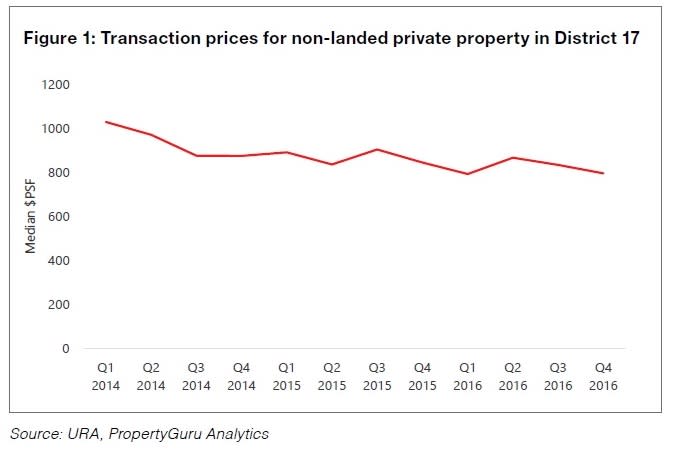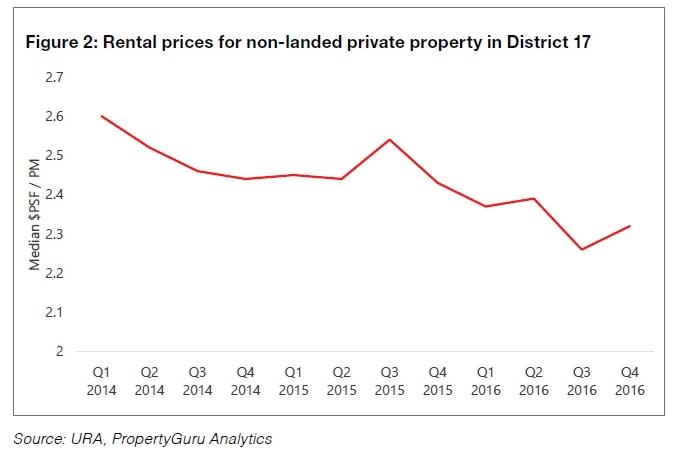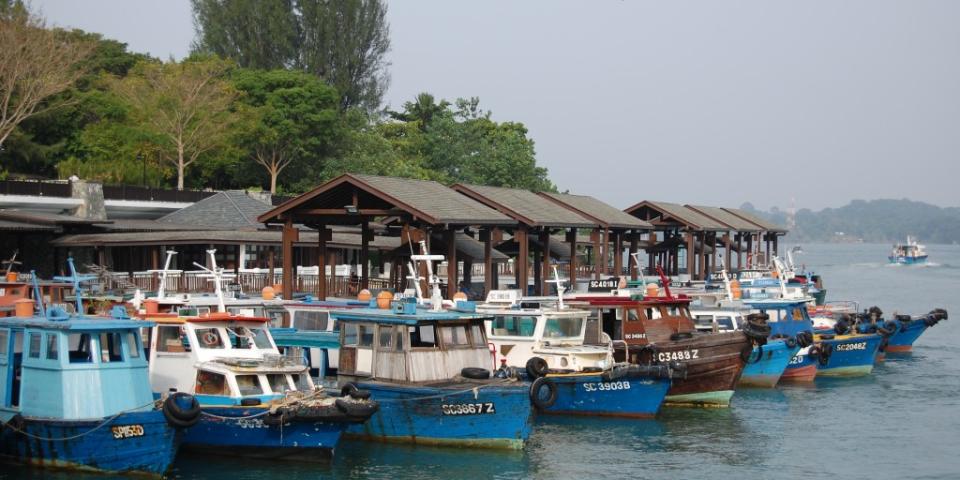Eye on Changi Village: Eastern Village life
Changi Beach is a popular place for activities ranging from leisurely strolls to water sports.
Never crowded and usually peaceful, Changi Village is one of the few areas in Singapore where one can go for some respite from the chaos of city life. We look at what else makes it unique, and why you might want to visit more often.
By Cheryl Marie Tay
Changi Village is unique in more ways than one. Despite being famous for its food (and infamous for other things, but I will get into that later) and often touted as an ideal weekend spot, it has never been known to draw in large crowds.
In fact, in 2005, the Singapore government promised to attempt to revive the area, which it then termed a “ghost town”. While referring to it as such may have been a bit of an overreach, perhaps the government has achieved its goal.
These days, Changi is still not overflowing with people, but it is certainly not a ghost town. And its lack of huge crowds despite its inherent popularity remains part of its appeal. Its coffee shops and other eateries are never empty, and neither are its various bars and cafés.
In fact, just a few years ago, the former Le Meridien Hotel in Changi was rebranded and revamped by Far East Hospitality under its Village Hotels & Residences line as Village Hotel Changi. Thanks to the relatively peaceful environment in which it is located, the hotel has become quite popular among those residing in Singapore to book rooms there for staycations.
Additionally, because of its proximity to Changi Airport, visitors who cannot find rooms at the airport’s Crowne Plaza Hotel or who simply prefer to stay in a quieter area often flock to Village Hotel Changi.
But first, let’s take a look at the history of Changi Village.
Before Changi was Changi
Changi Village is — as its name suggests — located in Changi, in the easternmost region of Singapore. More specifically, it is situated at the northern tip of Changi. But before Changi became known as such, it was called Tanjong Rusa; this name was first seen on the 1604 EG de Eredia map of Singapore.
It wasn’t until the early 19th century that the area became known as “Changi”, with the southeastern tip of the country stated as Tanjong Changi on the Franklin and Jackson 1928 map of Singapore. But during surveys of the country in the 1820s and 1830s, Changi was also referred to as Franklin Point, after one of the early surveyors, Captain Franklin. The origin of the name “Changi” is not clear, as there are a few possible explanations regarding its etymology.
It might have been derived from the Changal or Chengai tree, a heavy local timber tree found in the area. Another possible origin of the name (also related to flora) is the Changi Ular, a climbing scrub locally called Chengal Asir or Chengal Mata Kuching, which used to grow in the area.
Plantations and recreation
In the 1800s, Changi was best known for its coconut plantations. But as early as 1945, the area was also known as a resort town, where both government and private holiday bungalows were open for use.
Some years later, in the 1860s, sago plantations began to flourish in Changi. Its picturesque coast also made it a popular picnic spot, and its mostly flat terrain was dotted with three hills: Battery Hill, Fairy Point Hill and Temple Hill.

The colonial era
In 1926, most of the plantations and Chengai trees were cleared to accommodate the Royal Air Force Base; only one tree remained, as it was to serve as a marker for the base.
Around the same time, the old Changi hospital was constructed. During World War II, Changi Prison — which had been built in 1936 to hold
civilian criminals — saw around 50,000 prisoners of war from the UK, Australia and other Allied nations held in its main prison and its Selarang Barracks, alongside the 3,500 civilians already imprisoned there.
Changi Village was rife with colonial military goings-on, particularly at Changi Point, which was home to military barracks, administrative quarters and recreational facilities. This went on until 1967, when the British left Singapore. Subsequently, the Singapore Armed Forces (SAF) took over the military facilities in Changi.
Post-war progress
Land reclamation commenced in the 1970s to make way for the development of Changi Airport, with construction work beginning in June 1975. It took about six years to complete, and the airport officially started operations on 1 July 1981.
Changi’s old, rundown jetties, from which people would travel to Pulau Ubin or Pengerang (in Johor) via bumboat, were replaced in 2005 by a new ferry terminal. The next year, the Urban Redevelopment Authority (URA) initiated $16.7 million worth of infrastructure improvement works in Changi Point, including the 2.6km Changi Point Coastal Walk that stretches from Changi Village to Changi Beach Club. Also added to Changi Point was a cliff walk following the area’s terrain.

The shadier side
As with many areas in clean, green and sunny — even sterile, according to some — Singapore, there is a less PG side to Changi village. The transgender community is not a new phenomenon in Singapore, but to this day, a significant degree of social stigma surrounds them.
Many assume they are typically prostitutes, thanks in part to the nightlife in places like Bugis Street, Desker Road and Changi Village, which are known for being areas where transgender sex workers would ply their trade at night.
These days, the visibility of such sex workers in the aforementioned estates is lower, though some who go to Changi Village for supper do spot the occasional transgender prostitute there.
Despite this, Changi Village remains a popular haunt for many people, including parents who bring their young children there on weekends not just to enjoy the food, but also to cycle, jog, picnic, fish, camp or engage in water sports at the nearby Changi Beach, one of Singapore’s oldest coastal parks.
Unique selling points
Wong Xian Yang, Head of Research and Consultancy at OrangeTee.com, says Changi Village “is an area that is relatively less developed than other parts of Singapore, with a distinct lack of high-rise properties, likely due to its proximity to Changi Airport”. He adds: “Other existing structures include nursing homes, hotels, chalets, and religious buildings. The absence of a shopping mall and an MRT station, ubiquitous in almost every other housing estate, contributes to the general rustic feel of the area.
“The general detachment from the hustle and bustle of other housing estates may be attractive to those seeking respite from city life, but the trade-off of such a retreat is the inconvenience of commuting to and from the place.”
Writer Eugene Tay, 37, somewhat agrees: “(Changi Village) is quaint, with no crowds…until the Pokémon Go players came, that is. But it’s still mostly untouched by civilisation; there are many trees, it’s on the beachfront, people are friendly, and there’s a sense of mystery and history here.”
From ghost town to rustic charmer
11 years after the government pledged to revive Changi Village, which was called a “ghost town” then, how is the estate doing? According to Wong, the area “is generally quiet, with some developments in the area drawing some human traffic, such as the Changi Village Food Centre, Changi Beach, and Changi Ferry Point Terminal”.
It is certainly not a filled with throngs of people, but is “a far cry from being a ghost town”, in line with the government’s Changi Draft Master Plan 2013 to preserve the area’s “rustic charm” while promoting the area as a place for sports and leisure.

In 2005, Changi Point Ferry Terminal replaced the old, dilapidated jetties that were previously in use. (Photo: edwin.11, Wikimedia Commons)
Living in the Village
While there are residential properties in Changi Village, it is not known primarily as a residential estate. Wong says: “For those looking to stay directly in Changi Village, there are limited housing choices. All the HDB flats in the area are three-room flats and over 30 years old, except for the adjoined flats.
“However, due to the scarce supply, prices have shown more resilience. According to HDB transaction data, the 2016 year-todate median price is $296,000, in comparison to the 2013 median price of $306,500; this represents a fall of 3.4 percent. (To put things into) context, the overall HDB resale index is currently down 9.8 percent from its peak in Q2 2013.”
He expects demand and sales for projects in the area to be “unlikely to pick up in the short term, given that the government has no plans in the pipeline to turn the area into a housing estate” — at least, not on the scale of the developments in Punggol.
In the short term, any “major infrastructural developments in the area are likely to be airport-oriented, with the expansion of Changi Airport and the undertaking of Project Jewel”.
In terms of things to eat, do and see in the area, Tay recommends briyani, wheatgrass bandung, satay, and Ipoh hor fun. He also mentions Little Island Brewing Co., which has a good selection of beers, wines and single malt Scotch whiskies. The Pasir Ris resident, who has been living there since he was 14, visits Changi Village at least once a week, having grown up in Changi before moving to Pasir Ris. He credits his regular visits to his old neighbourhood to the many F&B offerings in the area, as well as the “magic and soul” of the place.
He says, “It does not feel like you’re in Singapore. It feels like a home away from home”.
This article was first published in the print version PropertyGuru News & Views. Download PDFs of full print issues or read more stories now! | |||



